Data op uw harde schijf kan in de loop van de tijd gefragmenteerd worden. Hierdoor wordt het voor het computersysteem moeilijker en daarmee dus ook trager om de data te raadplegen.
Windows heeft altijd tools geïmplementeerd om data op de harde schijf te defragmenteren en Windows 10 of Windows 11 is geen uitzondering.
Alhoewel harde schijven zorgen voor goedkope, snelle en betrouwbare bulkopslag van digitale gegevens, hebben ze wel te kampen met één groot probleem.
Door protocollen die dateren uit de tijd dat computergegevens op grote rollen magneetband werden opgeslagen, worden de gegevens achtereenvolgens op de harde schijf geschreven, zodat ze sneller weer kunnen worden uitgelezen. Dit is in het begin prima, omdat de gegevens worden opgeslagen in nette blokken of sectoren die voor het systeem gemakkelijk te vinden zijn.
Een gloednieuwe harde schijf zal zijn opslagruimte efficiënt gebruiken voor zo goed mogelijke prestaties, waardoor bestanden in een nette volgorde worden opgeslagen. Na verloop van tijd zult u echter onvermijdelijk sommige bestanden verwijderen en de harde schijf probeert met deze veranderingen om te gaan door de gegevensbestanden op te splitsen in de beschikbare lege ruimte op de schijf.
Dit kan betekenen dat uw bestanden worden opgesplitst in stukken die over de hele schijf zijn verspreid en wat de toegangstijd radicaal kan vertragen, zowel bij het opslaan van gegevens als wanneer u de gegevens van de schijf komt lezen.
Het systeem verliest de gegevens niet, maar een harde schijf is een mechanisch apparaat met bewegende delen en het fysieke proces van het heen-en-weer bewegen van de lees-schrijfkop over de schotel van de ene sector naar de andere neemt een eindige hoeveelheid tijd in beslag (SSD daargelaten).
Hoe meer de kop moet worden verplaatst, hoe langzamer de toegangstijd zal zijn. Na een paar jaar van intensief gebruik kan een harde schijf zo gefragmenteerd raken dat deze vertraagt.
Dit is een van de redenen waarom solid state drives (SSD’s) steeds populairder worden. Omdat ze geen bewegende delen hebben, moeten hun datasnelheden consistent hoog blijven, ongeacht hoeveel gegevens er worden opgeslagen of hoe vaak ze worden gewijzigd.
Gelukkig bevat Windows een optie om uw schijf te “defragmenteren”. Dit is een automatisch proces waarbij de gegevens op uw harde schijf worden gereorganiseerd in gemakkelijk toegankelijke aaneengesloten sectoren, waardoor de beschikbare ruimte zo goed mogelijk wordt benut en de toegangstijd aanzienlijk wordt verkort.
In eerdere versies van Windows was dit een handmatig geselecteerd proces dat u moest onthouden om regelmatig uit te voeren. Echter, Windows bevat een optie om automatisch een optimalisatie en defragmentatie procedure uit te voeren op alle aangesloten schijven op regelmatige basis.
Als uw systeem een harde schijf gebruikt, zoals de meeste dat doen. Is het de moeite waard om in elk geval de eerste vijf stappen van deze instructie uit te voeren om te zien of uw systeem baat zou hebben bij defragmentatie.
Als u een SSD gebruikt hoeft deze niet te worden gedefragmenteerd, omdat SSD’s gegevens op een andere manier opslaan dan fysieke “harde schijven”.
Harde schijf defragmenteren in Windows
Het is belangrijk dat u beheerder bent in Windows. U heeft een administrator (beheerder) account nodig om uw schijf te defragmenteren in Windows.
Open de Windows verkenner.
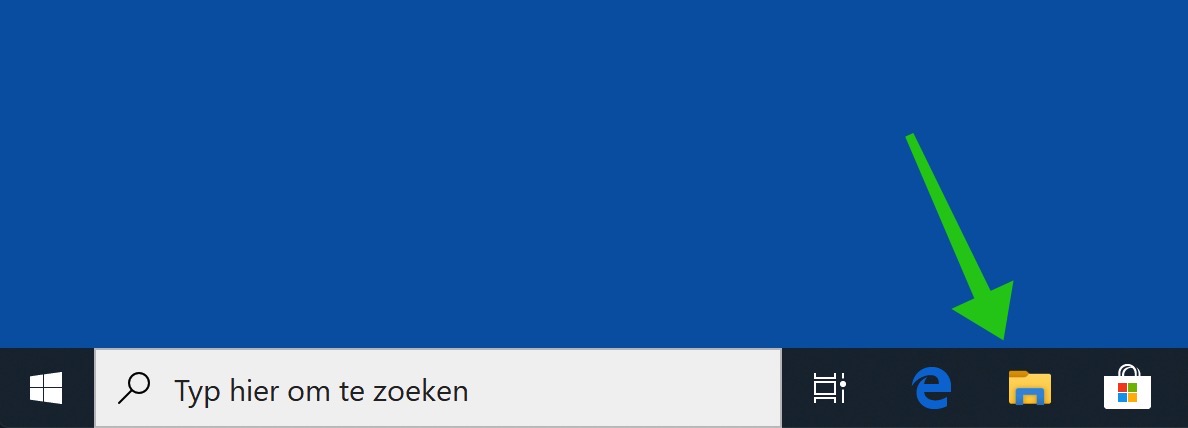
Klik in het linker menu op Deze Computer. Klik met de rechtermuisknop op de harde schijf in de lijst van aangesloten schijven die u wilt defragmenteren.
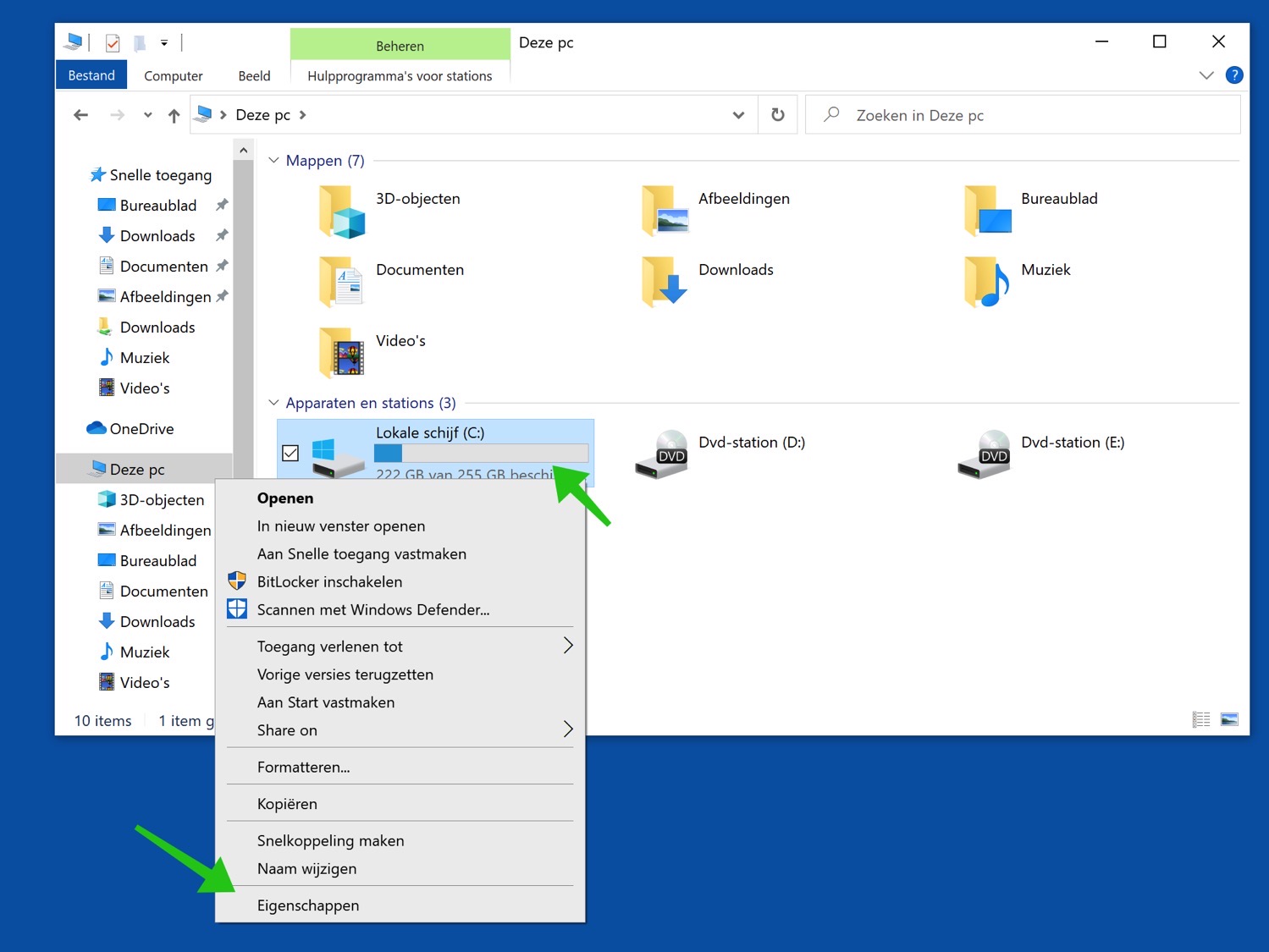
Klik op Eigenschappen in het menu.
In het eigenschappen menu klik op het tabblad: Extra. In de extra menu instellingen van de harde schijf klik op de Optimaliseren knop.
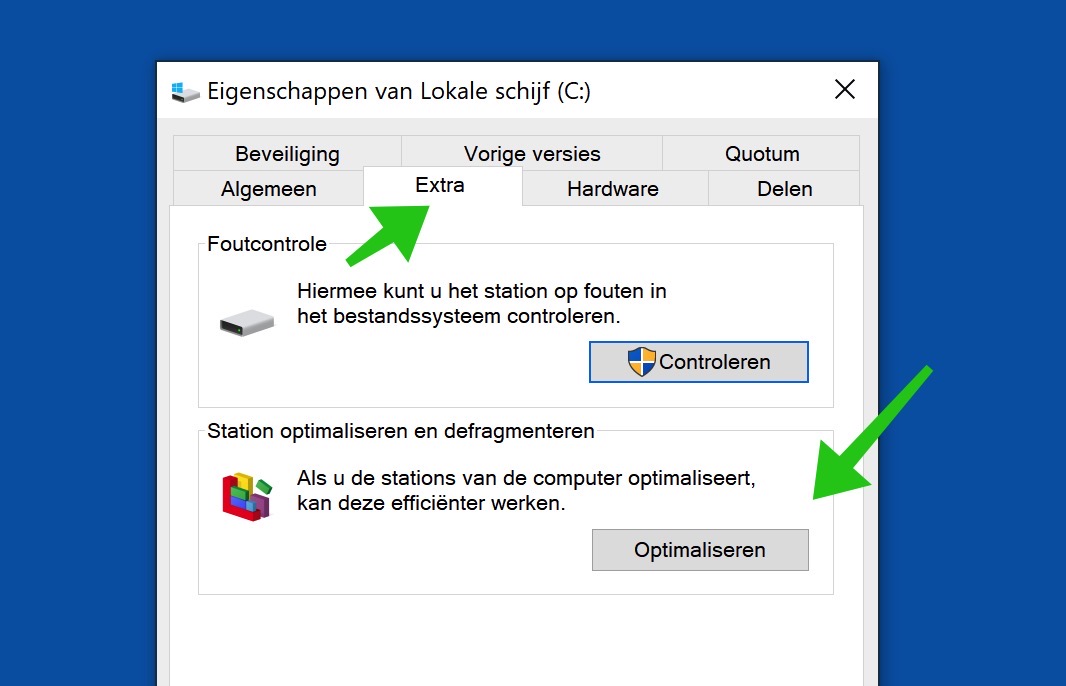
Dit opent het venster Stations Optimaliseren. Hier ziet u een andere lijst met alle harde schijven die aan uw systeem zijn gekoppeld. Ook ziet u wanneer de optimalisering voor het laatst werd uitgevoerd, en hoe gefragmenteerd de schijf momenteel is.
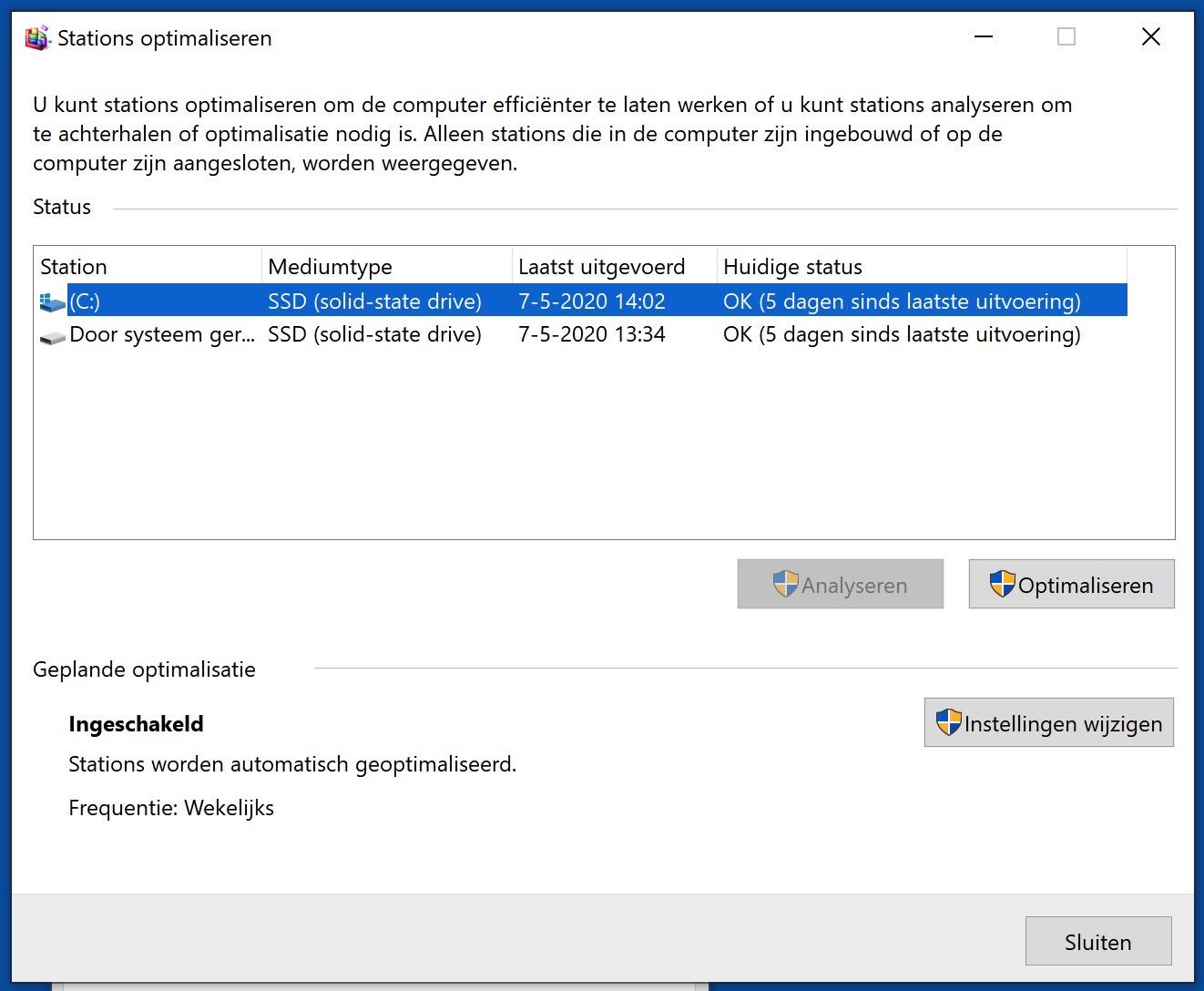
Als uw systeem op piekrendement werkt, zouden ze allemaal op 0% moeten staan.
Als een van uw harde schijven gefragmenteerd is selecteer de harde schijf door in het overzicht op de schijf te klikken, klik daarna op Optimaliseren.
Als het een grote harde schijf betreft met een aanzienlijk fragmentatie dan kan dit proces lang duren.
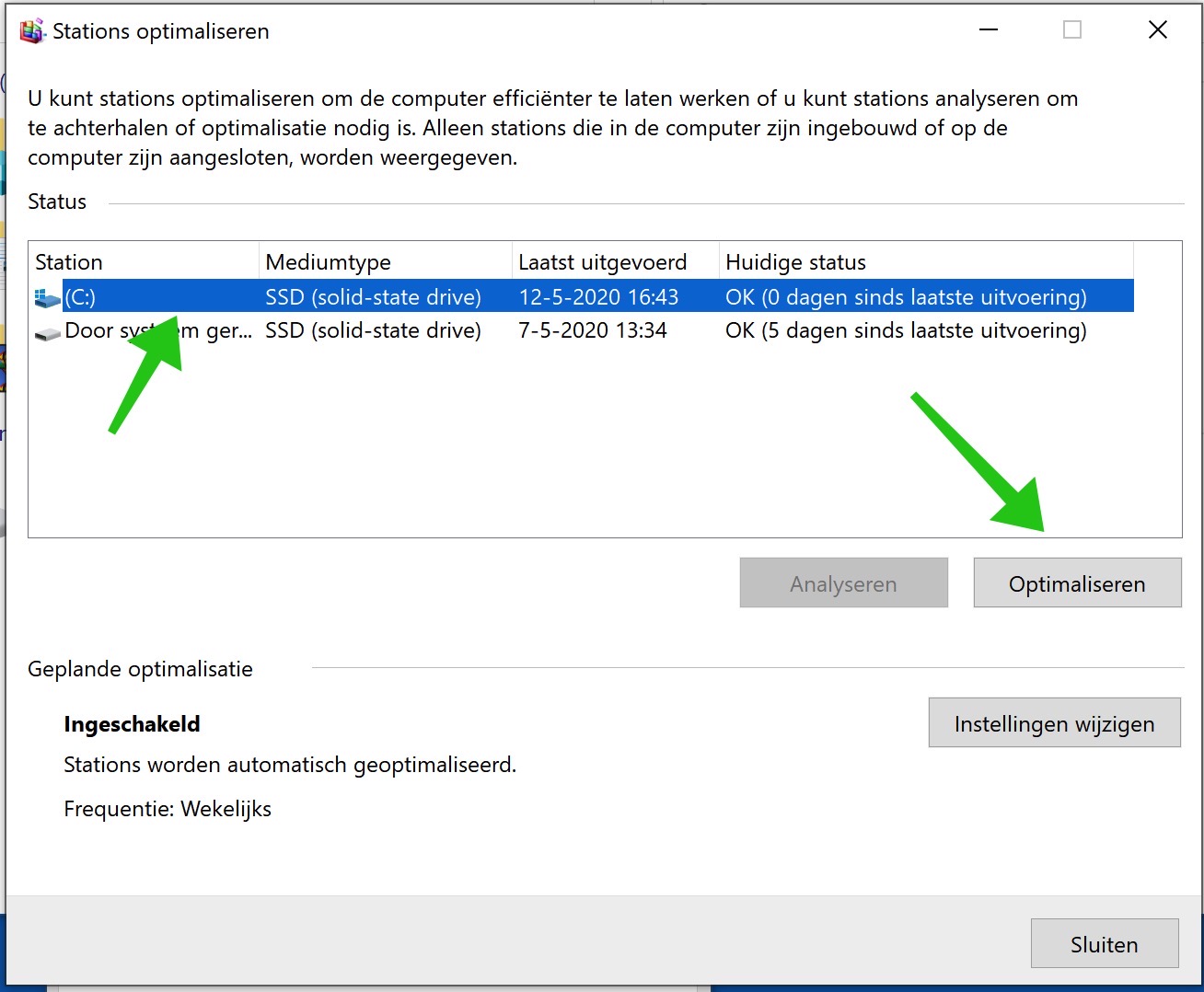
Nadat u de harde schijf heeft geoptimaliseerd (met andere woorden gedefragmenteerd) dan kunt u er ook voor kiezen om dit automatisch te doen. Klik op Instellingen wijzigen bij geplande optimalisatie.
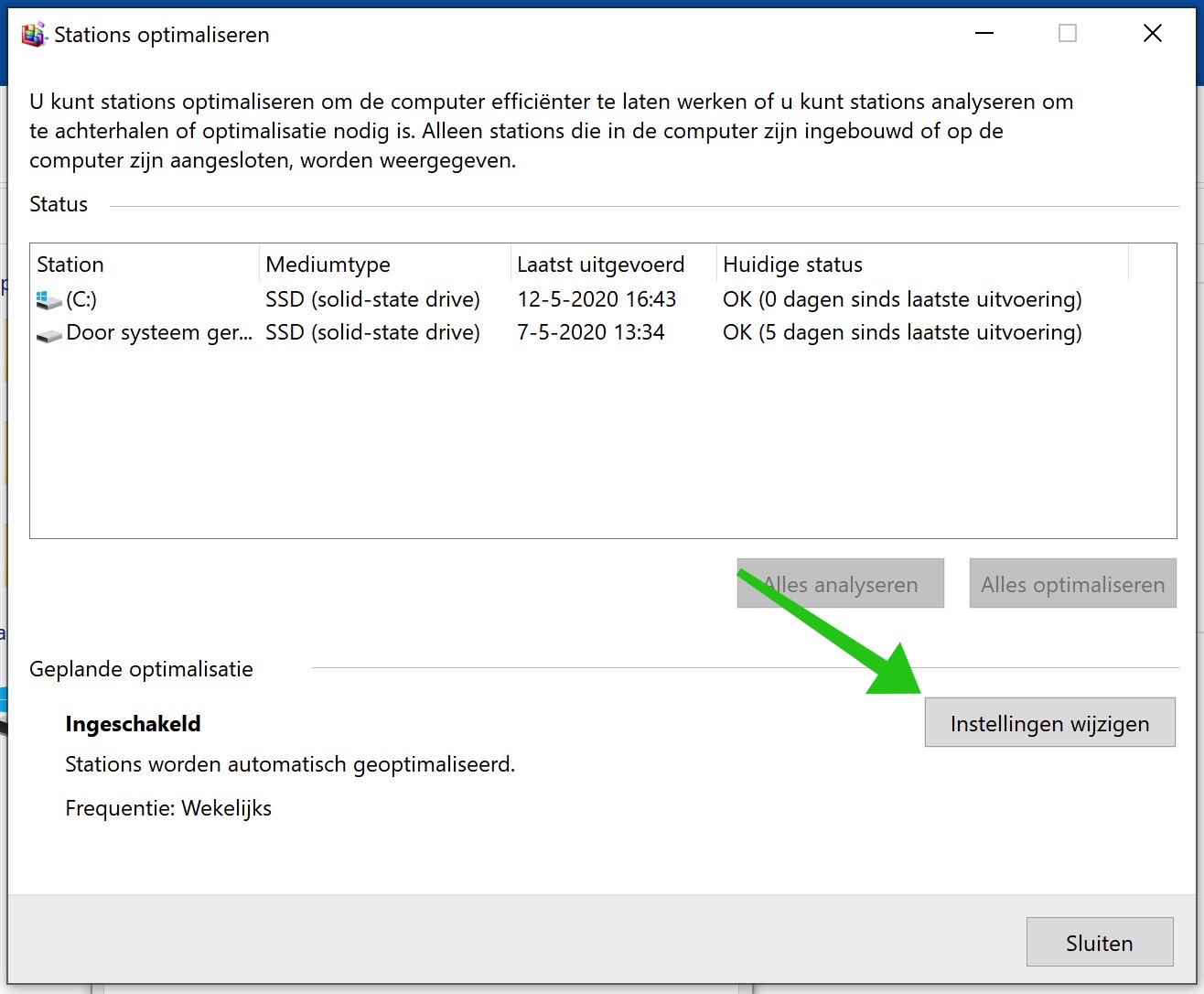
Ik raad aan om gepland defragmenteren voor een systeem wat u dagelijks gebruikt in te stellen op wekelijks.
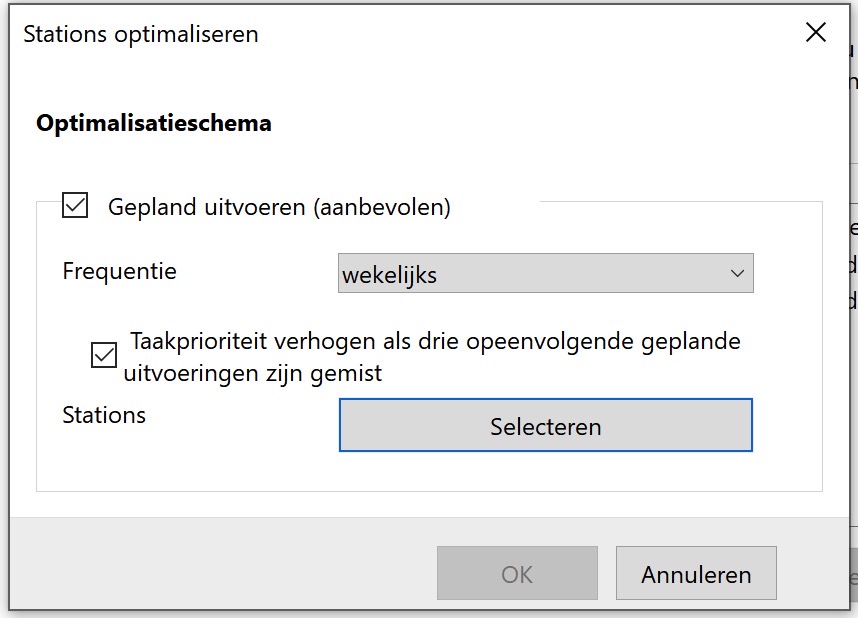
Ik hoop u hiermee geholpen te hebben! Bedankt voor het lezen.
Lees ook: 10 tips om Windows beter en sneller te maken.

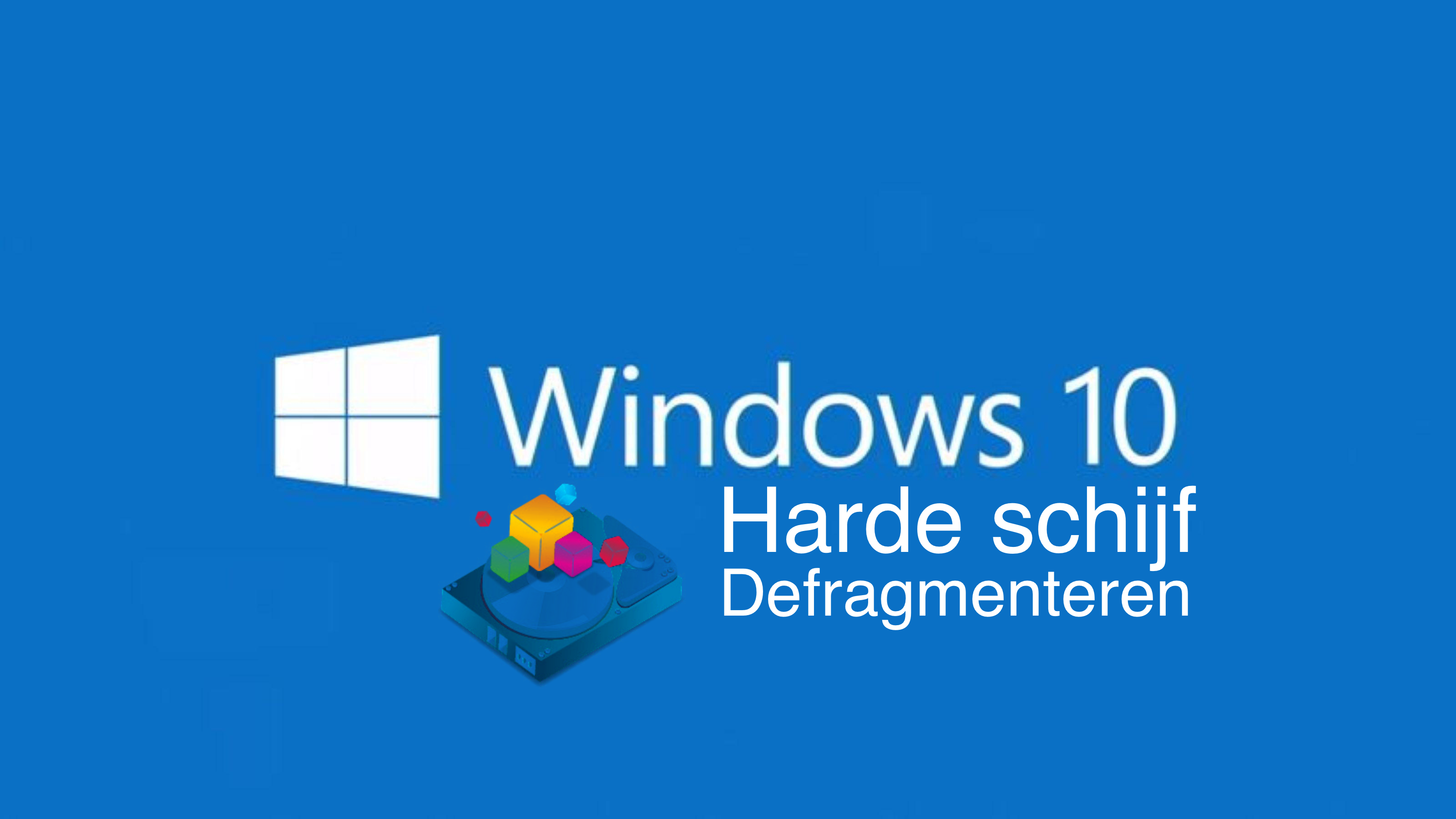
Help mee
Mijn computertips zijn gratis en bedoeld om andere mensen te helpen. Door deze pc-tip te delen op een website of social media, helpt u mij meer mensen te bereiken.Overzicht met computertips
Bekijk ook mijn uitgebreide overzicht met praktische computertips, overzichtelijk gesorteerd per categorie.Computerhulp nodig?
Loopt u vast met uw pc, laptop of software? Stel uw vraag op ons computerforum en krijg gratis computerhulp van ervaren leden en experts.